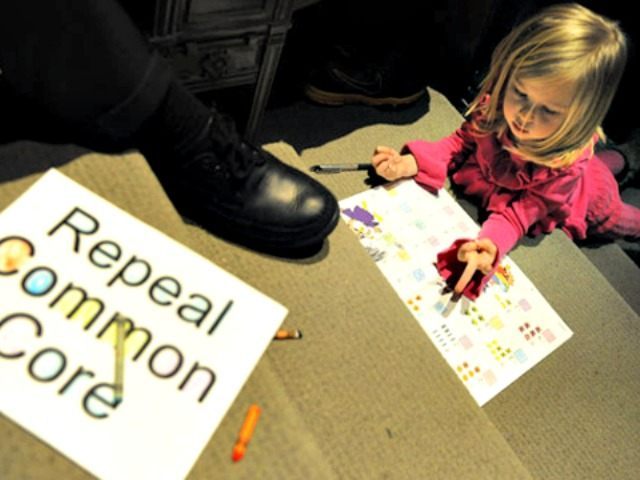The Wall Street Journal has added the word “plague” to the list of death-inspired terms frequently used now to characterize the unpopular Common Core standards education reform.
“Financial Woes Plague Common-Core Rollout,” read the headline Monday in a piece that notes many of the 45 states that adopted the Common Core are having second thoughts about the rush to sign onto them.
The article describes the dire situation of states that adopted the standards – sight unseen – in order to get a quick influx of federal cash. With no vetting of Common Core and the expense of training teachers and purchasing textbooks and technology, states are now faced with standards whose popularity has plummeted among parents and teachers.
GOP 2016 candidate Mike Huckabee referred to the Common Core as “toxic” two years ago, and his rival, former Gov. Jeb Bush, recently termed the standards “poisonous” – likely the effect they have had on his presidential campaign.
Former George W. Bush administration education adviser Ze’ev Wurman wrote recently that Common Core is “dead,” while Cato Institute’s Neal McCluskey – in reviewing new poll numbers that were catastrophic for the Core – described the education reform as “crashing.”
Along similar lines, the Boston Globe acknowledged recently that the federally funded Common Core test consortium known as PARCC – with many states exiting – is in a “death spiral.”
By subscribing, you agree to our terms of use & privacy policy. You will receive email marketing messages from Breitbart News Network to the email you provide. You may unsubscribe at any time.
In Oklahoma, where the WSJ reports one school district had spent “about $500,000 preparing teachers and students, collaborating with educators in other states and buying materials and computers for a new Common Core test,” Common Core was ultimately repealed and curricula had to be rewritten.
“The cost for me in time and training was phenomenally huge,” says Tara Fair, Edmond’s associate superintendent. “That’s one of the things that made me really sick when we went back to the old standards.”
As WSJ observes, however, the turning back after the established unpopularity of Common Core is only one reason why the education initiative has become a “plague” for states.
According to the report:
Many school districts discovered they didn’t have enough money to do all they needed to do. Some also found that meeting deadlines to implement the standards was nearly impossible.
The total cost of implementing Common Core is difficult to determine because the country’s education spending is fragmented among thousands of districts. The Wall Street Journal looked at spending by states and large school districts and found that more than $7 billion had been spent or committed in connection with the new standards…
Education officials say…that the new standards required more training and teaching materials than they would otherwise have needed, and that Common Core prompted them to speed up computer purchases and network upgrades.
Much more money would be needed to implement Common Core consistently. Some teachers haven’t been trained, and some schools lack resources to buy materials. Some states haven’t met the goal of offering the test to all students online instead of on paper with No. 2 pencils…
Preparing teachers to implement the standards can be costly. New Mexico spent $5.2 million training about 11,600 educators—about half of the state’s total, officials say.
Some states turned to grants from the $4.3 billion federal educational-reform program called Race to the Top to help fund a move to the standards.
But now most of that money is spent, leaving school districts to shoulder the continuing costs…
For many urban and rural districts, enabling students to take the test on a computer—a goal of advocates—proved another hurdle.
Subsequently, with many states repealing or rewriting Common Core and exiting the federally funded test consortia, it turns out “Common” Core isn’t quite so common any longer, a major blow to its original intent of having schools across the nation teaching the same concepts at the same grade levels.
“[A]fter a burst of momentum and a significant investment of money and time, the movement for commonality is in disarray,” states the WSJ. “A total of 21 states have withdrawn from two groups formed to develop common tests, making it difficult to compare results.”
Indeed, Common Core has grown to be such a “plague” that some supporters of the initiative – like chamber of commerce and other business groups as well as some governors – have stopped using its name.
“Common Core is a phrase that—we don’t use it anymore,” said John Engler, the former Republican governor of Michigan who now leads the Business Roundtable, an association of corporate executives who see the standards as a means for U.S. students to compete globally.
As WSJ reports, Engler says his group now refers to Common Core as “higher standards,” though there has been no independent research conducted to prove Common Core is, in fact, “higher.”

COMMENTS
Please let us know if you're having issues with commenting.